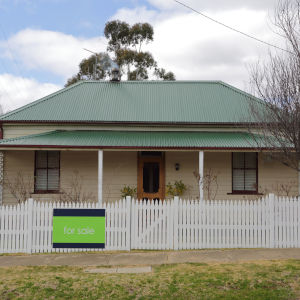Price boom in regional suburbs
Increased demand for larger homes has seen a significant rise in prices in multiple regional towns, according to recent figures.

New data released by the Real Estate Institute of Victoria revealed that increased buyer interest has boosted the prices of three- and four-bedroom homes in various Victorian regions in the 12 months to 31 March, 2016.
Belmont, a suburb in the city of Geelong, recorded the largest price increase for four-bedroom homes, with the median house price increasing by more than 25 per cent over the year, to $495,000.
This was followed by Geelong West, which recorded an increase of over 20 per cent based on a median house price of $630,000.
Also experiencing double-digit growth, Traralgon saw an increase of 16.4 per cent to a median of $390,000, Grovedale was up 13.4 per cent to $448,000, Lara grew 12.5 per cent to $450,000, Gisborne saw an increase of 12.1 per cent to $639,000, and Warragul was up 10.8 per cent to $410,000.
Multiple regional towns across the state also experienced significant capital growth for three-bedroom homes.
Daylesford, located in the foothills of the Great Dividing Range, saw the highest annual growth for three-bedroom homes, recording an increase of 26 per cent to a median of $515,000.
Horsham also experienced growth of around 26 per cent, recording a median house price of $220,000.
Other towns that recorded significant price growth for three-bedroom homes include Romsey, up 17 per cent to a median of $420,000, Ballarat North, increasing 12.9 per cent to $320,000, Barwon Heads, seeing growth of 12.5 per cent to $720,000, and Canadian, up 10.8 per cent to $338,000.
Growth for two-bedroom homes was also recorded in towns within commuting distance of the city, including Geelong West and Ballarat East, where the median house prices for two-bedroom homes increased by 8.8 per cent and 6.8 per cent respectively.
Speaking to Smart Property Investment, Jo Vadillo, buyers advocate and principal of Advocate Property Services, said that while property data like this is a good indication of growth in areas, it isn’t the only information investors should be looking at when considering buying in regional areas.
“I would always look to the ABS [Australian Bureau of Statistics] in terms of what the growth looks like for younger age brackets and demographics, for long-term growth reasons,” she said.
“My biggest concern [with a regional town] is if it’s having its glory days now, what’s going to happen in five years, 10 years, 15 years?
“Some of those regional areas might have had a burst of activity in the 80s and 90s, but then it reaches the university age bracket and they all skip town and go to the city where there could be more jobs and more money circulating.”
Ms Vadillo says it is also important to look at whether any roads are planned.
“Is there going to be a bypass, and therefore is the industry going to fall off?
“If the road systems improve or if there are plans in the next 10 years to improve the road systems, does this mean that it effectively becomes a ghost town?
“For me, I’d be looking at all those factors to make a judgement on investing in a regional area.”